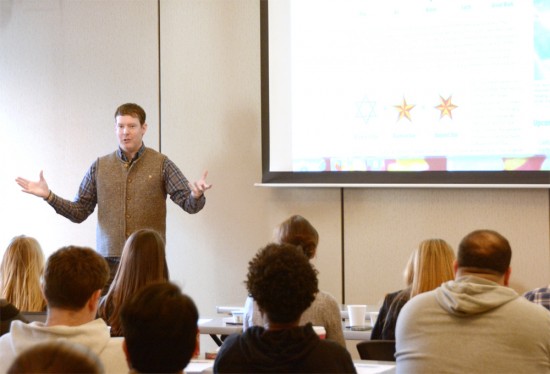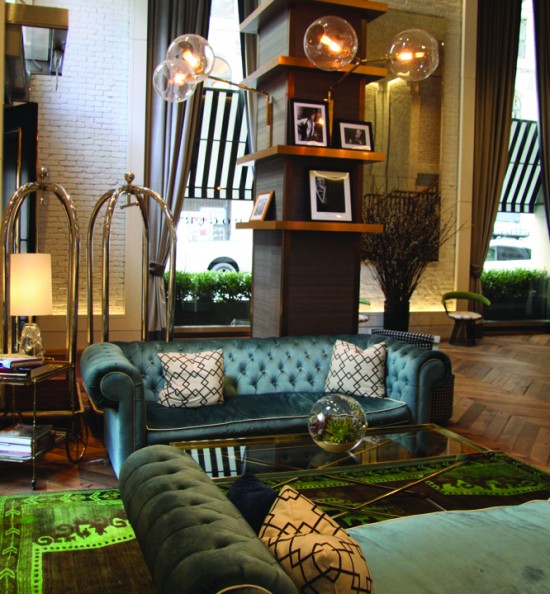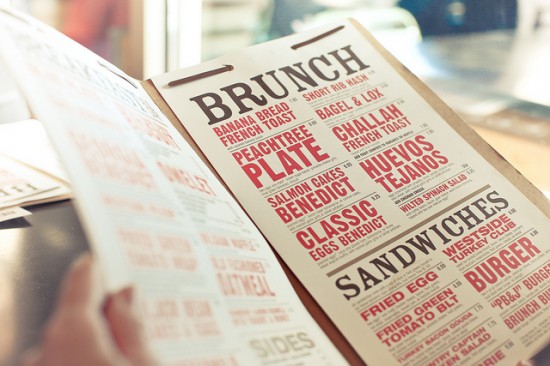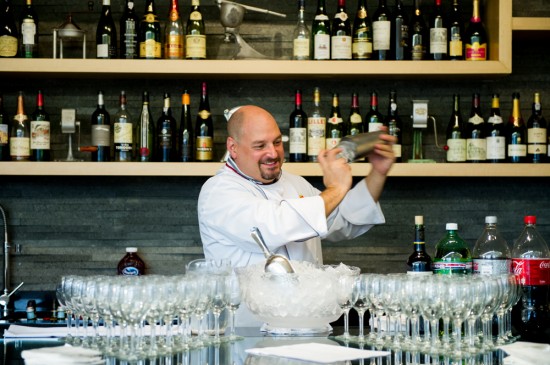It's been a busy five weeks since my first blog post. In class, we've covered topics ranging from menu planning and finding a location to restaurant finances and branding. What's more, it seems like we're meeting a new food entrepreneur each time we come to class!
Visits from the innovators at Chipotle and Sixpoint Brewery and field trips to Daniel and Blue Smoke have been a few of the highlights. The end result is information and networking overload. While that might sound intimidating, it's actually the intellectual equivalent of stuffing yourself on Thanksgiving: though you can barely fit another bite, you keep on eating—or in this case, learning—because it's that good.

While we've covered a wide range of subjects, my favorite thus far has been restaurant psychology. I've always been fascinated by human psychology—though honestly, who isn't? Understanding how it transforms the dining experience, however, is particularly eye opening. Think you chose that filet mignon of your own free will? Think again. From interior design to menu item placement, successful restaurants use psychology to influence customers' perceptions and decisions.
Here are some of my favorite lessons:
Interior Design
As most savvy restaurateurs are aware, color has a huge effect on appetite. For example, did you know that red, yellow and orange are all appetite stimulants? Conversely, blue and green are an appetite suppressant (Though, bar owners should note—blue tends to be a thirst stimulant.) So if you're thinking of painting the walls of your steakhouse a pale green, you may want to reconsider. These seemingly trivial decisions can significantly affect a restaurant’s profits.

Menu Layout
Have you ever wondered why most menus are designed in a similar fashion? Research has shown that the human eye processes information written on a book-style menu in a specific order. When you open a menu, your eye immediately moves to the top right.
Then, in what is referred to as an "eye-bounce," your gaze shifts to the middle of page, then the top left, followed by the bottom left, back to the top right, and finally, down to the bottom right. In other words, the top right corner is prime real estate, as the only menu quadrant your eye automatically bounces to twice.
Conversely, the menu's bottom right corner is the least profitable spot, as it’s the last place your eye bounces. This is why we so often find a restaurant's most expensive dish—for example, a raw bar platter or lavish entrée—placed in the top right of the menu.
Inexpensive vegetable sides, however, are most often placed on the bottom right.

Strategic Pricing
Two other tricks menu designers employ are boxing and bolding. These two techniques are designed to draw your eye to certain menu items—typically, the most expensive dish on the menu. This can serve two purposes. First, you’ll notice and hopefully order the very expensive $42 Kobe beef.
However, if you’re watching your budget, that $25 pasta dish will seem like a great deal in comparison. Obviously, the cost of ingredients for these two menu items is very different, and they are priced accordingly. But by viewing the expensive item first, you’re more likely to feel excited about your decision, no matter which dish you choose. (For a detailed look at menu layout and strategic pricing, click here.)

“Compliments of the Chef”
A round of drinks or an appetizer on the house makes you feel pretty special, right? Well, have you ever stopped to think about the motivation behind this rock star treatment? No matter how wonderful or attractive you are, the waiter isn't giving you this free food because he or she has a crush on you. Rather, it's a strategic decision.
That free appetizer may cost the restaurant $15, but it just might secure your return visit. That second visit is worth far more than a $15 plate of complementary bruschetta, but most of us fail to think of it in those terms. In fact, many restaurants have an unspoken rule: for every two drinks a customer buys, they will comp your third.
Curious to learn more secrets of the restaurant industry? Click here for more information about ICE’s Culinary Management program.



